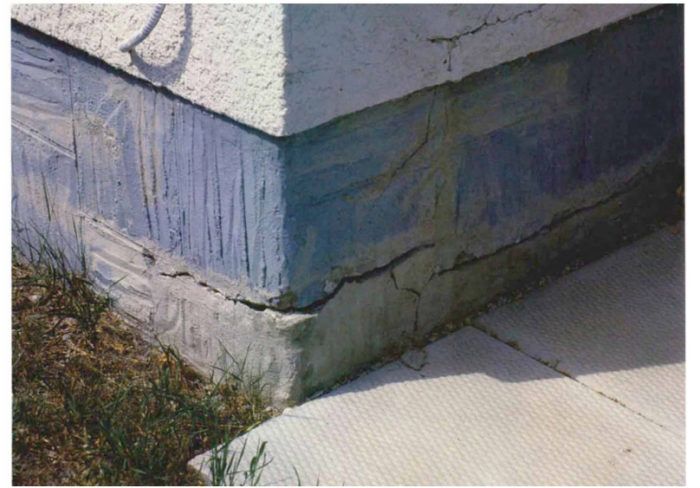
Synopsis: Cracked concrete foundations are a common building problem. This article explains the causes, covering subsurface soil conditions, concrete placement, and other contributing factors. A sidebar explains how cracks can be repaired with epoxy.
Throughout much of North America, homeowners face a similar problem—the cracking concrete foundations supporting their houses. The results are rarely life-threatening, but can be plenty uncomfortable. Water seeps into basements, plaster in the house cracks, and doors jam.
There’s no doubt that the problem is widespread. A 1981 survey by Owens-Corning Fiberglas Corporation of over 31,000 families throughout the U.S. found 59% of the households reporting leaky basements. A similar survey here in Canada in 1983 (by the University of Manitoba civil engineering department) found that over 70% of the houses surveyed had cracks in their basement floors, interior walls, and ceilings, with major cracks in 9% of the houses. Cracks in foundations are a particular problem in areas where there are expansive soils. Poor construction practices can also cause major problems with cracking.
Unruly substrates
Expansive soils are found throughout North America, but are particularly common here in Winnipeg, which is located on a former glacial lake bottom. Lake Agassiz was formed during the last Ice Age and covered about 180,000 sq. mi. of what is now Manitoba, Saskatchewan, North Dakota, and Minnesota. When the lake vanished about 7000 years ago, a layer of silt and clay which varies in thickness between 15 ft. and 40 ft. was left behind.
Lake Agassiz clay, like most clays, changes in volume as soil moisture levels change. According to Prof. Len Domaschuk of the University of Manitoba civil engineering department (who conducted the Winnipeg foundation survey), a layer of clay one foot thick will change about an inch in thickness as it alternates between dehydration and saturation. As it swells, clay can exert over 10,000 lb. of pressure per sq. ft. against a foundation.
A National Research Council of Canada study in Winnipeg between 1962 and 1966 found that the elevation of the ground surface fluctuated by 5 in. during that period, with vertical movements of 3 in. at 5 ft. below grade. A house built on this unruly substrate with its foundation footings 5 ft. below grade will therefore heave or settle up to 3 in. as moisture levels change. The house will sit still only if the moisture level is stabilized.
Controlling soil moisture
There are some basic and inexpensive measures that can be taken to minimize changes in the moisture content of the soil.
Lots shouldn’t be completely cleared of shrubs and trees, as they often are in subdivisions. Roots take moisture from the soil, and when they’re removed, soil moisture levels increase and the soil swells. A new concrete foundation placed in this swelling soil will almost always crack, especially if the concrete hasn’t reached its full design strength—and often it hasn’t.
Conversely, trees shouldn’t be planted too near a foundation. They should be kept at least 15 ft. away, otherwise they’ll cause the clays against the house to shrink excessively and cause the house to settle. If there’s a tree right next to the foundation, remove it.
For more photos and details, click the View PDF button below:


























